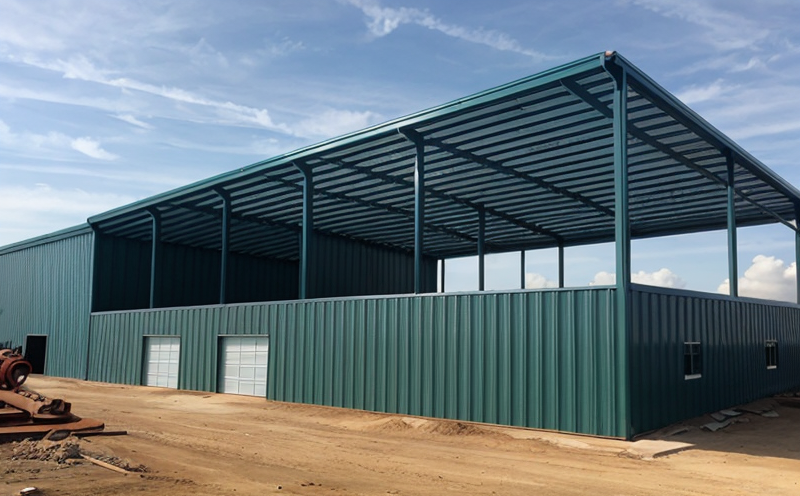ASTM D257 Electrical Insulation Resistance Testing for IoT Systems
The American Society for Testing and Materials (ASTM) standard D257 is a critical protocol used to assess the electrical insulation resistance properties of materials intended for use in high-voltage applications, including those found in modern Internet of Things (IoT) devices. This service ensures that electronic components within IoT systems meet stringent safety and reliability requirements.
The importance of electrical insulation cannot be overstated, especially given the widespread integration of electronics into everyday life through smart home appliances, wearables, and connected devices. Insulation resistance is a key parameter in determining how well materials protect against potential short circuits or hazardous voltage surges that could compromise device performance or user safety.
The ASTM D257 test measures insulation resistance by applying an alternating current (AC) or direct current (DC) voltage across the material sample and measuring the resulting leakage current. This process helps identify any weaknesses in the insulating properties of materials, which is crucial for ensuring long-term durability and reliability of IoT devices.
For instance, in smart home applications like smart thermostats, doorbells with video cameras, or home security systems, proper insulation resistance ensures that these devices operate efficiently without risking electrical hazards. Similarly, in wearable technology such as fitness trackers, heart rate monitors, or smartwatches, adequate insulation prevents accidental shocks and enhances user experience.
The ASTM D257 test is particularly relevant for IoT systems because it addresses the unique challenges posed by miniaturization and integration of multiple components into compact devices. By adhering to this standard, manufacturers can ensure that their products meet industry best practices and regulatory requirements, thereby building consumer trust and fostering innovation in the smart home sector.
In summary, ASTM D257 electrical insulation resistance testing plays a vital role in safeguarding both users and devices by validating the integrity of insulating materials used in IoT systems. This service not only enhances product quality but also supports compliance with international safety standards.
Applied Standards
The ASTM D257 standard is widely recognized for its comprehensive approach to evaluating insulation resistance, making it an essential tool for quality assurance and regulatory compliance across various industries. Here are some key standards that complement the ASTM D257 protocol:
- IEC 60134: This international standard provides guidelines on dielectric strength tests for electrical equipment used in medical applications, which often involve high-voltage components.
- EN 60980-2:2005: This European standard establishes requirements for the safety of lamps and luminaires, emphasizing insulation resistance as a critical parameter to prevent electric shocks during use.
- ISO/IEC TR 14738-3: Though not directly related to ASTM D257, this technical report offers insights into test methods applicable to measuring dielectric properties of materials, which can be useful in extending the scope of ASTM D257.
By integrating these standards alongside ASTM D257, laboratories can provide a holistic approach to ensuring the safety and reliability of insulation materials used in IoT systems.
Scope and Methodology
| Test Objective | To measure electrical insulation resistance properties of materials intended for use in high-voltage applications within IoT devices. |
|---|---|
| Apparatus Used | - Insulation Resistance Tester (Megger, Fluke, etc.) - AC/DC Voltage Source - Standard Test Specimens (e.g., PCBs, wires) |
| Test Procedure | 1. Prepare the test specimen according to manufacturer specifications. 2. Connect the specimen to the insulation resistance tester using appropriate cables. 3. Apply an AC or DC voltage as specified by ASTM D257. 4. Measure and record the leakage current. 5. Calculate the insulation resistance based on the formula: R = V / I, where R is resistance (in ohms), V is applied voltage (in volts), and I is measured current (in amperes). |
| Acceptance Criteria | The specimen must achieve a minimum specified insulation resistance value as outlined in the ASTM D257 standard. This ensures that materials used in IoT devices can withstand expected operating conditions without compromising safety or performance. |
This methodology ensures accurate and consistent results, providing reliable data to support product development and compliance with international standards.
Customer Impact and Satisfaction
- Increased Product Reliability: By ensuring that insulation materials meet ASTM D257 requirements, customers can expect IoT devices to function reliably over extended periods without failures due to electrical malfunctions or component degradation.
- Better Consumer Trust: Adherence to stringent safety standards like ASTM D257 enhances brand reputation and builds trust among consumers who value product quality and safety.
- Enhanced Regulatory Compliance: Meeting these international standards helps customers navigate complex regulatory landscapes, ensuring smooth market entry and operation in various jurisdictions.
- Improved Innovation: Rigorous testing protocols like ASTM D257 encourage continuous improvement in material science and device design, driving technological advancements in the IoT industry.
In summary, implementing ASTM D257 insulation resistance testing significantly impacts customers by delivering safer, more reliable, and innovative IoT products that meet global standards.





